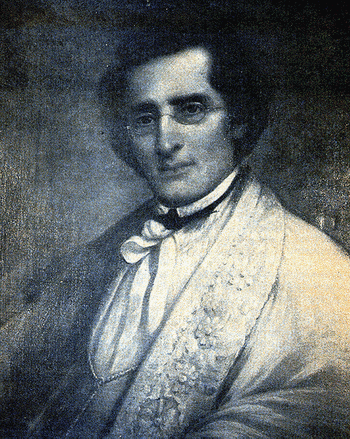2.2.3 The political-philosophical, journalistic and essayistic ideology and work of Félix Varela (1787 – 1853)

Félix Varela played a vital role in shaping the nation’s consciousness, and given his role as an educator, this role not only remained an evolution of his personal thinking but would also remain firmly anchored in the consciousness of his disciples and followers. Varela was a worthy predecessor of many ideas present in the ideological and thematic corpus of Martí’s work, and his influence was such that José de la Luz y Caballero once said: “As long as we think about the island of Cuba, we will think about the one who first taught us to think.”
Above all, reflecting on the island and its future was a crucial aspect of his analyses, presented in essays and journalistic articles, such as those published in “El Habanero,” a newspaper he founded in 1924 when he began his exile in Philadelphia, United States, after being sentenced to death in Spain for his liberal ideas. His political ideology definitively bridged the gap between the most advanced reformist thought and the independence movement, which he strongly promoted in his writings, not only for Cuba but also from an Americanist perspective.
Likewise, on the philosophical and didactic levels, he broke with the dominant scholasticism in science teaching and introduced experimentation as a path to knowledge and the principles of Cartesian rationalism, in which analysis was essential to understanding phenomena, overcoming the blinding dogmatism that prevailed in the academic sphere of his time.
The three fundamental milestones of his work are marked by “Philosophical Miscellany”, published in 1819, the articles in “El Habanero”, which had a brief existence from 1824 to 1826 and “Letters to Elpidio, on impiety, superstition and fanaticism, in their relations with society” (1835 – 1838) In addition to the transition in his political thought that occurred between 1823 and 1824 approximately, the style of his pen was somewhat freed from neoclassical molds to come closer to romanticism, without losing the sobriety of content and form.
Some critics consider him our first true essayist. His prose effectively combines a vast culture of the purest Spanish language with phrases emanating from the people, even colloquial ones, but achieving an expression without embellishment and intelligible in all its facets, as befitted the didactic intentions he always harbored.
His texts about exile, during which he spent the last 30 years of his life, are part of the broad literary imagination of displacement and nostalgic evocation of distant lands, even though the writer was sparing in his emotionality. Varela achieved, in prose, the same concreteness of the ideas of homeland and independence—although he sensed that the conditions were not yet ripe for the struggle—that Heredia reflected with singular mastery in his poetry.








